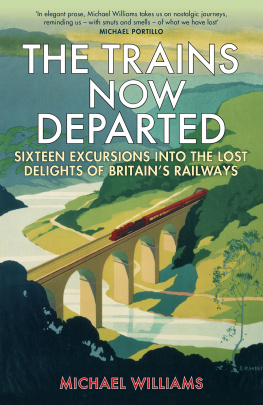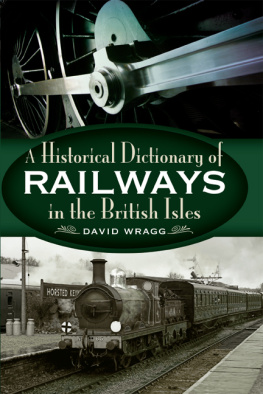Minnis John - Britains Lost Railways
Here you can read online Minnis John - Britains Lost Railways full text of the book (entire story) in english for free. Download pdf and epub, get meaning, cover and reviews about this ebook. year: 2018, publisher: Quarto Publishing Group UK, genre: Religion. Description of the work, (preface) as well as reviews are available. Best literature library LitArk.com created for fans of good reading and offers a wide selection of genres:
Romance novel
Science fiction
Adventure
Detective
Science
History
Home and family
Prose
Art
Politics
Computer
Non-fiction
Religion
Business
Children
Humor
Choose a favorite category and find really read worthwhile books. Enjoy immersion in the world of imagination, feel the emotions of the characters or learn something new for yourself, make an fascinating discovery.

- Book:Britains Lost Railways
- Author:
- Publisher:Quarto Publishing Group UK
- Genre:
- Year:2018
- Rating:5 / 5
- Favourites:Add to favourites
- Your mark:
- 100
- 1
- 2
- 3
- 4
- 5
Britains Lost Railways: summary, description and annotation
We offer to read an annotation, description, summary or preface (depends on what the author of the book "Britains Lost Railways" wrote himself). If you haven't found the necessary information about the book — write in the comments, we will try to find it.
Britains Lost Railways — read online for free the complete book (whole text) full work
Below is the text of the book, divided by pages. System saving the place of the last page read, allows you to conveniently read the book "Britains Lost Railways" online for free, without having to search again every time where you left off. Put a bookmark, and you can go to the page where you finished reading at any time.
Font size:
Interval:
Bookmark:
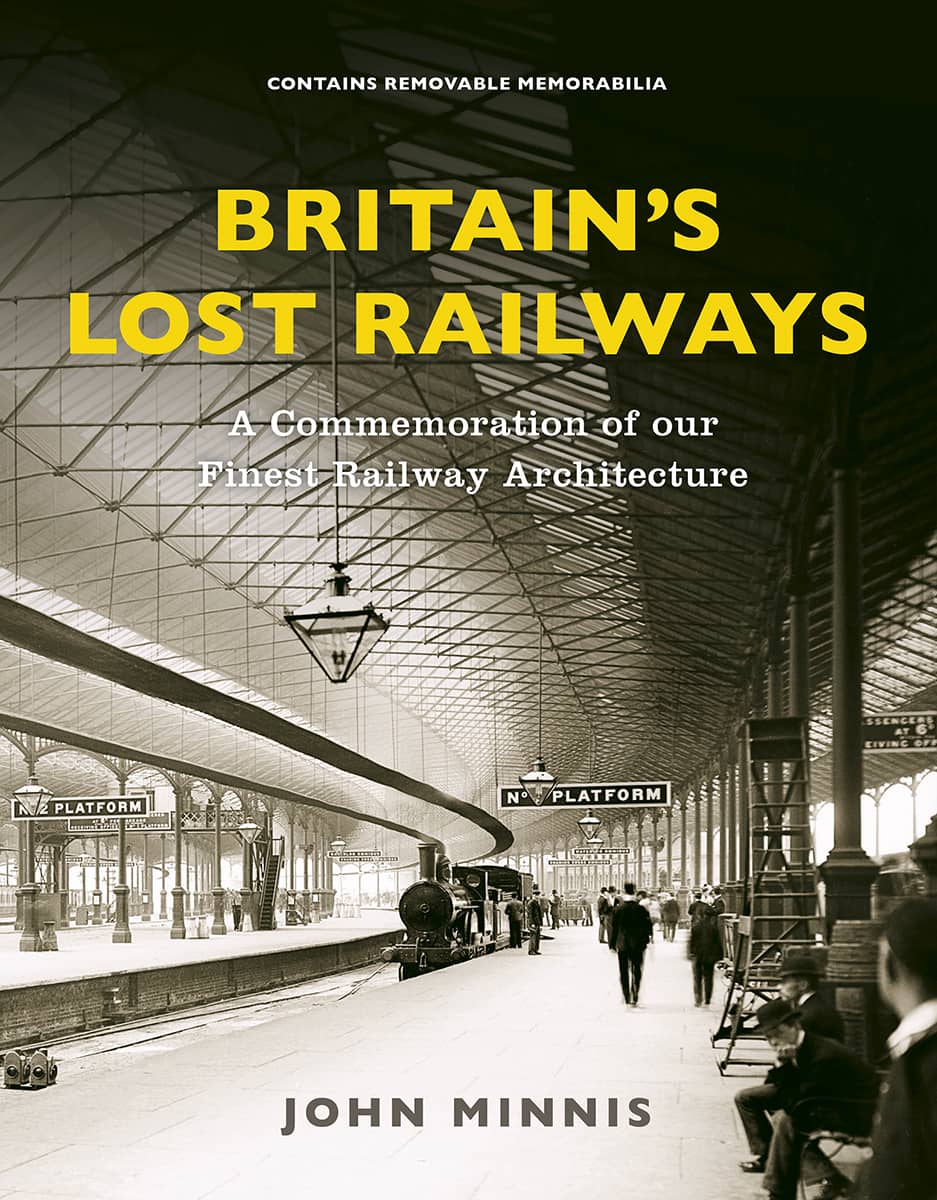

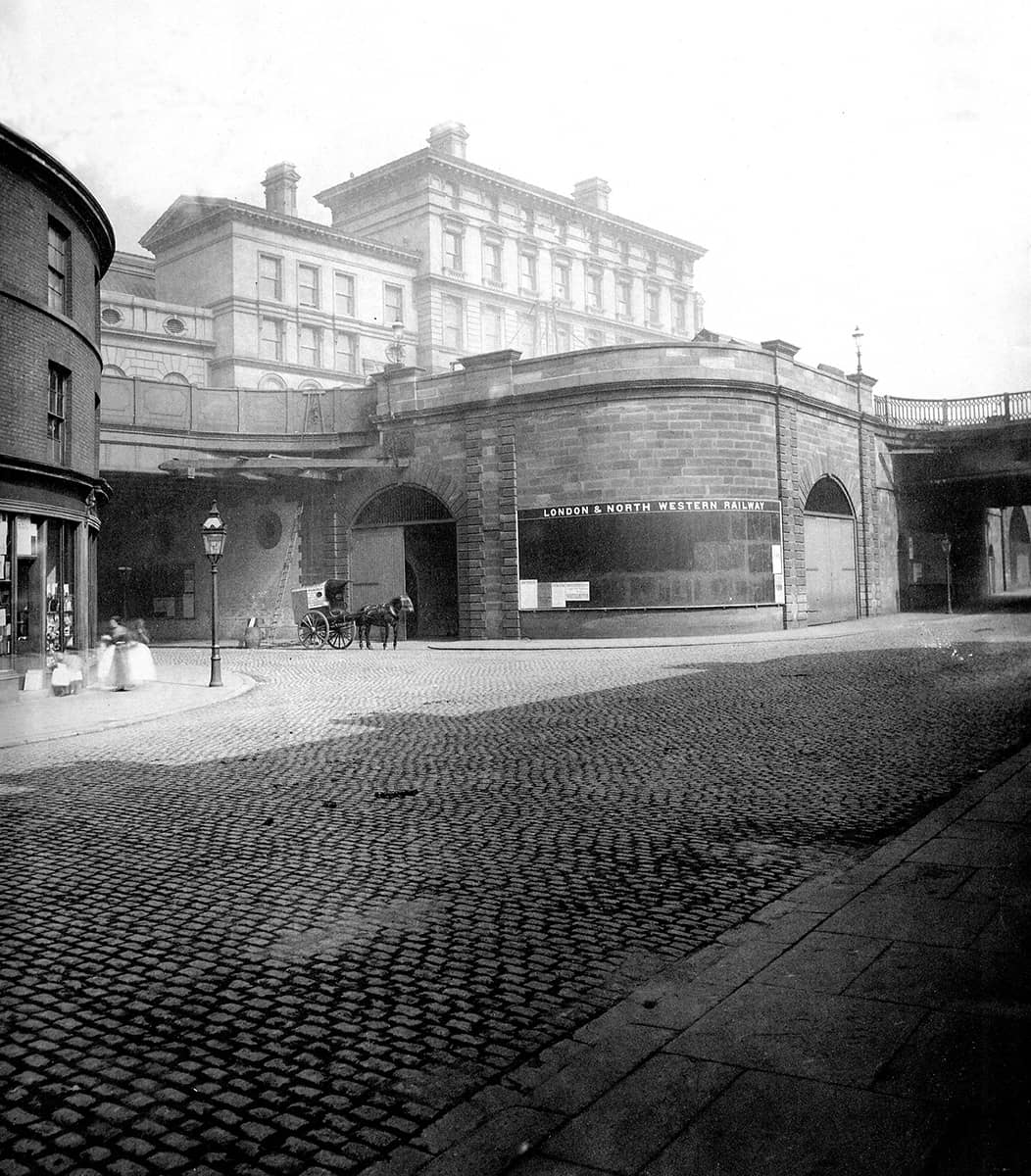
THE TWENTIETH-CENTURY DESTRUCTION OF OUR FINEST RAILWAY ARCHITECTURE
JOHN MINNIS

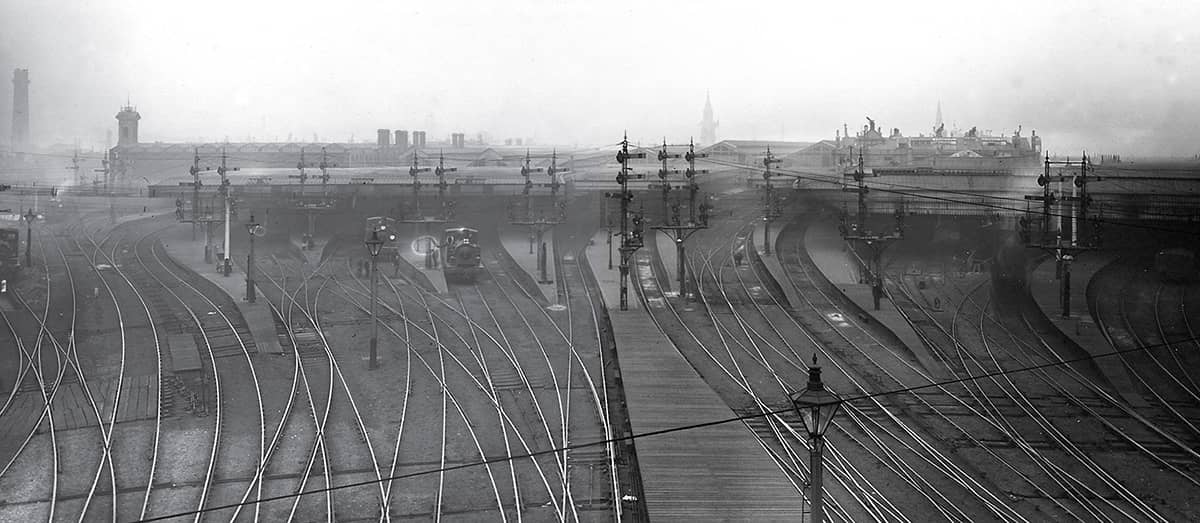
Exactly 50 years ago, an unusually enlightened prep school teacher (she must have been a paid-up member of the Victorian Society) set her eight-year-old charges some unusual homework to research, visit and draw some of Londons threatened buildings. The first week, it was J. B. Bunnings superb Coal Exchange, demolished the following year. The following weeks task was, in the event, even more opportune. My mother, by this time, was becoming a little put out with this slightly strange approach to learning, asking why she had to spend her weekends taking me up to town, but she acquiesced. We walked down a rather narrow street, hemmed in by tall buildings and, on the left, loomed the unmistakable shape of the Euston arch. I knew it from photographs but, to an eight-year-old, its scale seemed immense and the thing that struck me most about it was its blackness 150 years of soot gave it an unmatched sublimity not that I would have known the word at the time. The first delivery of scaffolding poles was lying alongside it and I was just in time the scaffolding went up in mid October and Drummond Street, along which we had walked, was closed to traffic. Hoardings sprang up and the Euston arch was lost to view for ever. A couple of weeks further on in the year and it would have been too late. It was my one and only visit to it and I have that rather poor, if still recognisable, sketch drawn from life still.
The demolition of the Euston arch, which was, with St Pancras, arguably the finest example of railway architecture to have been built in Britain in the nineteenth century, caused anguish amongst all those who loved Victorian architecture. It was a monument of elemental creativity in a style that stands in everyones mind associatively for the greatest human achievements, the style of the Age of Pericles The government stuck to the view that the arch was only listed Grade II and was therefore expendable and that the cost of moving it, which they set at 190,000, was unacceptable. Demolition commenced and was completed by April 1962.

Liverpool Street is one of the great conservation success stories, the present station combining the best of the 18745 station, with its soaring iron roof, with all the convenience that passengers and staff expect of a station today. Inevitably, in the process of reconstruction, there were losses: the roof of the east side extension of 1894 and the charming Edwardian tea rooms that used to run off the footbridge linking the disparate parts of the old station. But what has also gone is something much harder to define, the extraordinary atmosphere of the place. Deep gloomy patches, suddenly lit up by a shaft of light like this one shining on a railway policewoman, were to be found all over the station, especially around the cab road and the booking office, brilliantly captured in a Fox photograph of 27 March 1952. It was this combination of light and shade, adding an element of the sublime, that made Liverpool Street special. Fox Photos/Getty Images
Britains Lost Railways is not an exercise in nostalgia. There is more than enough nostalgia about railways, as a glance through any booksellers catalogue will prove. Some of what is pictured here had to go, and with good riddance it was simply not worth keeping. But much lost railway architecture was so good that, by its destruction, we are all the losers. And not all the losses are tangible. Today, romance is the last thing that comes to mind when waiting for a train at one of the great London termini. They are clean and efficient (certainly compared with fifty years ago) but extremely busy and, above all, incredibly noisy with constant warnings and advice, some necessary, some profoundly irritating, every few minutes.
But it wasnt always like this.
Railway stations were once intensely romantic places. There was a sense of otherness to them, as though they were in some way detached from the outside world. True, there were kiosks of W. H. Smiths, Wymans or John Menzies selling little but newspapers, books and magazines, the stalls of the Empire Fruit Co. and the sweet shops of Maynards. But these were merely a prelude to travel; one did not go to stations for a retail experience to buy stuff. They were not extensions of high streets or Oxford Street. No, they were a point of departure for far-off places, a process accompanied by arcane ritual even into the 1960s, the stationmasters of the great London stations wore silk hats.
It was at the great London termini and provincial stations that one encountered this romance, this sense of possibility, to the full. The names of the trains helped the Royal Scot, the Queen of Scots, the Cornish Riviera Limited, the Cathedrals Express, the Red Dragon, the Golden Arrow, the Atlantic Coast Express as did the names of the steam locomotives themselves Wolf of Badenoch, Hyperion, Quicksilver, Lord of the Isles.
The architecture added to that sense of anticipation. Today, we have bright, even lighting seemingly everywhere on the station, certainly around the concourse, if not on the further extremities of the platform. What we have lost, above all, is chiaroscuro, the bright gleams of sunlight shining through patches of utter darkness that gave the great termini in the 1950s and 60s so much of their mystique. The soaring roofs were often half obscured in a sepulchral gloom, an intoxicating if unhealthy mix of locomotive exhausts and fog. Colours, too, were generally muted and layers of soot covered most of the surfaces.
G. K. Chesterton wrote in 1909 that:
you will find in a railway station much of the quietude and consolation of a cathedral. It has many of the characteristics of a great ecclesiastical building; it has vast arches, void spaces, coloured lights, and above all, it has recurrence of ritual. It is dedicated to the celebration of fire and water, the prime elements of all human ceremonial.
Along with chiaroscuro, it is this quietude that has largely vanished but along with it, so have many of the stations themselves, either wholly or in part.
The old Euston may have been an awkward place to operate but it had an almost palpable grandeur that came partly from age but more from the magnificence of its architecture. Coming by foot from Euston Road, one walked through what might almost have been a series of stage sets past the two outer lodges (still there) where the view was blocked by the bulk of the Euston Hotel. Passing under this, the arch (I will call it that although, strictly, it is a propylaeum) stood before one in all its sublime splendour in what was almost a square. Passing through it, one entered an inner courtyard, covered with an awning, before walking through into the architectural climax of it all, the Great Hall, one of the most magnificent Victorian interiors in London, presided over by the large statue of George Stephenson. From here one would walk to the impressive, if grimy, train shed. In passing from one enclosed space to another, with views blocked, one experienced classic townscape of the type advocated by Gordon Cullen.
Font size:
Interval:
Bookmark:
Similar books «Britains Lost Railways»
Look at similar books to Britains Lost Railways. We have selected literature similar in name and meaning in the hope of providing readers with more options to find new, interesting, not yet read works.
Discussion, reviews of the book Britains Lost Railways and just readers' own opinions. Leave your comments, write what you think about the work, its meaning or the main characters. Specify what exactly you liked and what you didn't like, and why you think so.






